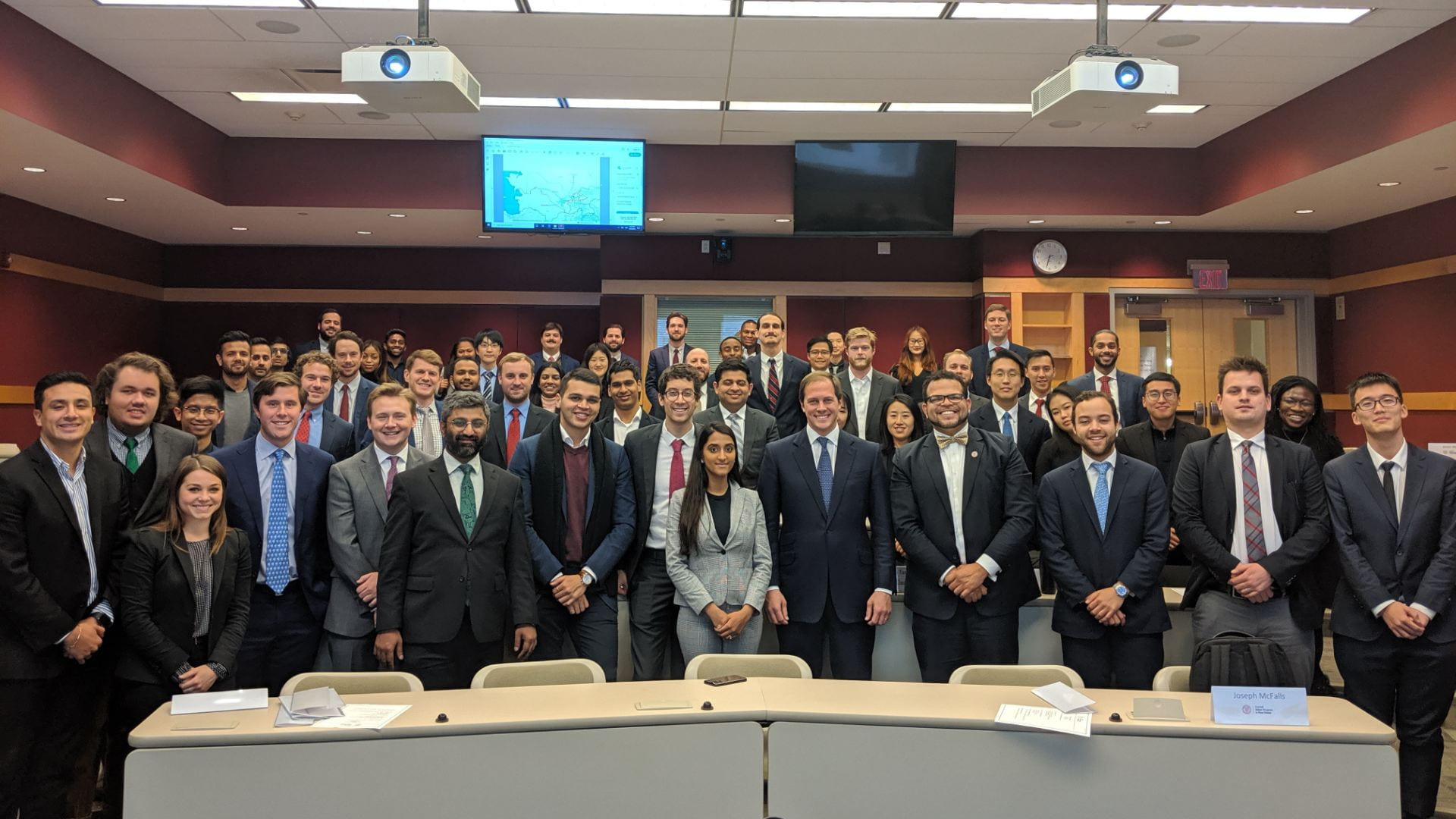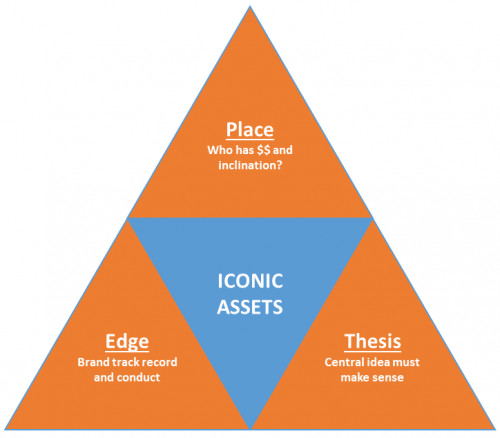
Engaging the audience with a series of vivid animations, Mr. Sellman began by presenting three of Santiago Calatrava’s iconic projects in the U.A.E and the United States. The subject of the first video was the Dubai Creek Tower, an observation tower that is rumored to stretch over 1000 meters (3280 feet) in height, which is approximately 200 meters (650 feet) taller than the Burj Khalifa. Due to intense competition to build super-tall structures, the true height of this project has been kept confidential. The tower, supported by suspension cables, is estimated to have about three times the amount of steel as in the Eiffel Tower just in its sub-grade structure. Housing a wetland preserve protecting 67 bird species, this tower will be a central marquee for the Dubai Creek Harbor, a new planned district spanning as much as 6 square kilometers (2.3 square miles), which is three times the size of Downtown Dubai.

As images of this architectural marvel captivated the audience, Mr. Sellman proceeded to explain the thesis of his firm. Calatrava Grace adopts a unique but fully independent business model. While the remarkable legacy of Santiago Calatrava often informs the company’s development efforts, Calatrava Grace also offers its own vertically integrated development management services. With a starchitect at center stage, bringing unprecedented brand resonance and decades of industry relationships to this alliance of architecture and real estate development, Calatrava Grace has managed to build a remarkable portfolio of beautiful projects around the world. Mr. Sellman described the Calatrava Grace method as an intersection of four factors: cutting edge design & technology, superior execution, significant funding, and broad government support.
Inspired by the organic forms of U.A.E.’s national bird, another Santiago Calatrava project, the majestic “Falcon Pavilion” was the highlight of the second animation. Designed for the World Expo 2020, this self-sustaining solar power-driven pavilion has a dynamic shell with operable panels evoking the mighty, protective wings of the falcon—a symbol of force and courage in Arab culture. These panels can be used to harvest solar energy while effectively shading the interiors from the desert sun. Located on a 200-hectare site (500 acres), the pavilion spans 15,000 square meters (161,500 square feet). The World Expo in Dubai is expected to have 25 million visitors. During the exposition, the pavilion will showcase high-tech LED instruments, while afterwards, it will be transformed into a museum that pays homage to Emirati technology.
 As evident through the soaring cantilevers and open spaces in his design, Santiago Calatrava, according to Mr. Sellman, is “always looking for more light.” The final video elaborated upon Calatrava’s style through his proposal for the Innovation, Science and Technology Building at Florida Polytechnic University in Lakeland, Florida. The main goal of his design was to create an active environment and an inviting experience for the visitors of this building. This uninhibited architectural language is widely present in much of Calatrava’s work abroad.
As evident through the soaring cantilevers and open spaces in his design, Santiago Calatrava, according to Mr. Sellman, is “always looking for more light.” The final video elaborated upon Calatrava’s style through his proposal for the Innovation, Science and Technology Building at Florida Polytechnic University in Lakeland, Florida. The main goal of his design was to create an active environment and an inviting experience for the visitors of this building. This uninhibited architectural language is widely present in much of Calatrava’s work abroad.
In Central Asia, where many of their current projects are located, Calatrava Grace faces unconventional challenges and opportunities. Mr. Sellman recounted an experience where one local project, with which Calatrava Grace had no affiliation, had 20 buildings constructed by 9 distinct contractors, who barely coordinated with one another. Unsafe site conditions and shoddy construction methods further exacerbated the situation, further reinforcing the need for more experienced developers like Calatrava Grace to construct better, safer buildings in the area.
To navigate the unforeseen challenges of developing in Central Asia, Mr. Sellman familiarized himself with the anti-bribery and anti-corruption Foreign Corrupt Practices Act of 1977. He believes that this was paramount in protecting Calatrava Grace as it pursued projects in unfamiliar markets such as Uzbekistan and Kazakhstan. He emphasized the importance of local knowledge, long-term commitment, and strong relationships with lenders. Mr. Sellman describes his trade as “90% politics and 10% real estate math.” He advises entrepreneurs entering new markets to respect the local leadership and avoid pedantry.
As he discussed the challenges of navigating unfamiliar markets, Mr. Sellman encouraged the audience to “get on a plane, see the world, and learn about new opportunities.” He emphasized Westerners’ role in Central Asia by explaining the need for skilled labor there. A population of 160 million including Ukraine, a highly centralized government, and a well-developed high-speed rail network make Central Asia a significant market for growth in the real estate industry.
Local motivation to balance the influence of Chinese lending and, in some cases, the preference for collaboration with the U.S. over Russia provide the perfect context for fast-growing development backed by local governments. As the world experiences a resurgence of the Silk Road through Central Asia, places with unbelievably rich history and large concentrations of wealth present an incredible business opportunity that is often overlooked by U.S. developers. Recognition of cultural and historical nuances in non-traditional jurisdictions form the basis of Calatrava Grace’s endeavors in Asia.
One such example of a contextually relevant project is the March 2019 Affordable Housing Proposal for Uzbekistan’s Navoi and Tashkent regions. The 15,000-home per year mandate is set to be constructed in phases, with the primary intention to address the housing shortage in the area. Backed by the government, this project will exhibit contemporary architectural design with traditional flourish. Using versatile materials such as concrete and masonry in modular, time-saving techniques will allow attractive structures to be provided at affordable prices.
Mr. Sellman concluded his lecture by recalling how a social connection in New York City helped obtain this project for Calatrava Grace in Uzbekistan. His parting advice for the audience was to build strong, positive relationships and to remain alert because opportunities present themselves in the most unexpected ways. The Baker Program thanks Mr. Sellman for his visit and hopes to welcome him to Cornell again in the near future.
